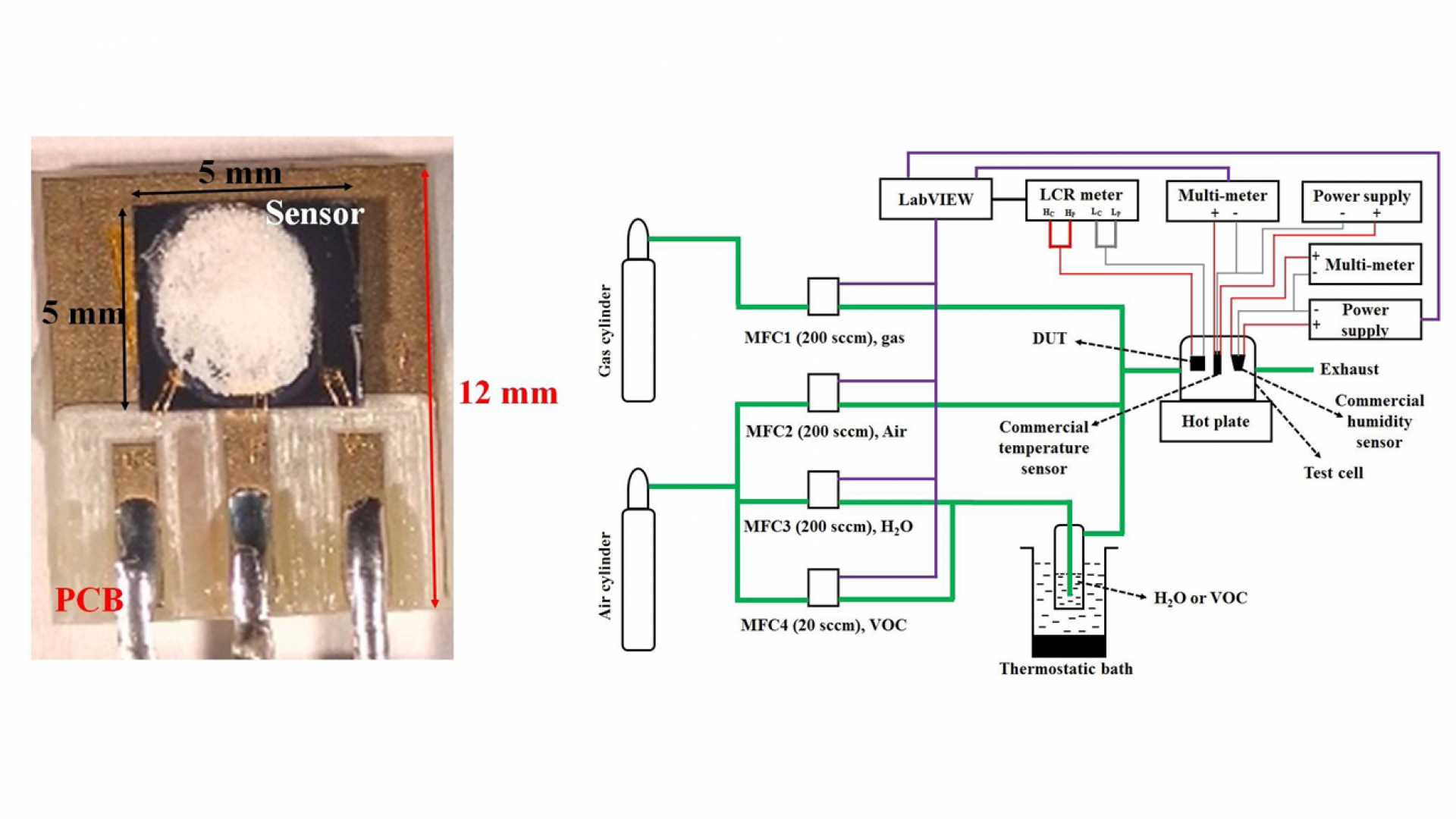Karumbaiah N. Chappanda, et al., "Trianglamine Hydrochloride Crystals for a Highly Sensitive and Selective Humidity Sensor", Sensors and Actuators B: Chemical 294, 2019, 40.
In this work, we present a highly sensitive and selective capacitive humidity sensor. Trianglamine hydrochloride is used as the sensing material, which is synthesized by a [3+3] cyclocondensation reaction between terpthaldehyde and 1R,2R-cyclohexanediamine followed by addition of hydrochloric acid and vapor diffusion of acetone. The crystalline trianglamine hydrochloride salts are dispersed in acetonitrile and then coated on interdigitated electrode substrates by drop casting. The sensor response is characterized for relative humidity (RH) ranging from 5% to 95%. The sensor has a nonlinear response, where the sensitivity increases with an increase in RH. The sensor demonstrates, on average, normalized sensitivities of 0.015 and 6.9 per percent of RH below and above 65% RH, respectively. In addition, the sensor is characterized for hysteresis, long-term stability, effect of temperature, and selectivity. The hysteresis of the sensor is a maximum of about 20% RH and is stable for over 25 days. Temperature analysis of the sensors shows that the sensitivity decreases with increase in temperature. The material is shown to be highly selective with respect to volatile organic compounds (VOCs) and toxic/corrosive gasses. Overall, trianglamine hydrochloride is a promising material for developing a highly sensitive and selective capacitive transduction-based humidity sensor.
